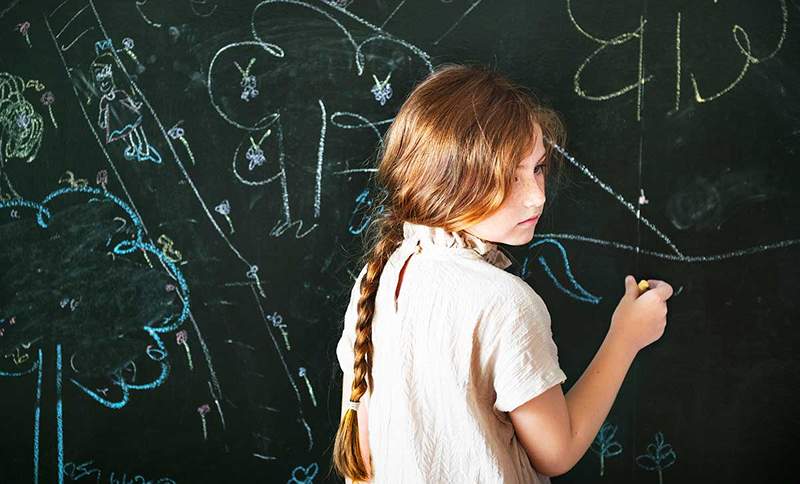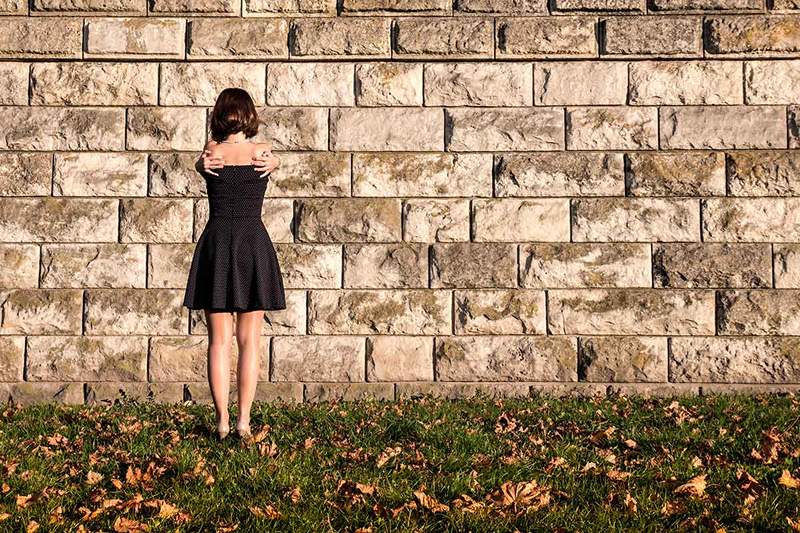Child abuse of long -term effects

- 1414
- 264
- Jeffery Jones
The concept of child abuse includes various dimensions, so that reaching an agreement on its definition has been a repetitive issue dealt with by the Convention on the Rights of the Child. Raised this panorama, we will define in the most extensive way that is possible to child abuse and its implications.
Through this term, reference is made to the damage (physical or emotional) exerted by an adult about a minor. It normally happens from the adult figures that should take care and protect the welfare of a child.
Any damage exerted by adults to a person under 18 is considered child abuse.
Physical wounds, in most cases, heal faster than the emotional traumas that mistreated boys and girls end up suffering. Imagine the following scene: the person who is supposed to protect and care for you ends up abusing you. This is a very serious injury, a Deep wound that of not receiving attention and emotional containment could be definitely open.
Let's now address child abuse: its implications and consequences in adult life.
Content
Toggle- Forms that child abuse can adopt
- The effects when growing from child abuse
- Child abuse at the physical level
- The emotional sequelae of child abuse
- What can be done?
- Bibliographic references
Forms that child abuse can adopt
This kind of abuse, like any other, can adopt different forms. It is crucial to know each of them since some end up going unnoticed. Knowing that it is abuse, it is the main tool to discern it and be able to put a brake on a situation of violence. Let us now review the forms that child abuse can take:
- Physical abuse: This includes blows, bodily wounds such as cuts or burns. It is probably the type of abuse (whatever your case) easier to identify by its visible sequels than the body manifests. It happens when or adult, deliberately, damages the physical or psychological integrity of a child.
- Emotional abuse: unlike physical abuse, this can go unnoticed. Emotional abuse does not leave bruises or open wounds. However, Its psychic sequelae are insortable, durable and serious. It includes this type of abuse of those situations in which an adult is directed with speech violently to a child, either through screams, insults, the contempt, punishes and devalue.
- Abandonment: The abandonment of an adult to a child is one of the most frequent forms of child abuse, and is one of the most impact on the life of a child end up having. Not only includes those cases in which a child is left on street drifting, depriving him of a home and care. But also It covers those situations in which children are not provided with basic needs: food, clothing, education, a roof to live and affection.
Sadly, In most cases of abuse of children, the abuser is a family figure for the little. Someone who is supposed to protect it, like a father, mother, uncles or older brothers.
What is emotional negligence in childhood?
The effects when growing from child abuse
Childhood is a crucial period for development. The first years of life of a child will definitely have an impact on various aspects: from their brain development, physical growth, their intellectual, cognitive, even social abilities even social. During this period, stimulation and care are crucial for favorable growth and development.
Child abuse leaves traces that can even be seen in the long term in adulthood. Beyond the severe physical injuries that a minor can suffer due to adult abuse, in a critical period such as childhood, violence generates chemical changes at the brain level that, if not correctly treated, can lead to complex destinations.
Child abuse at the physical level
The abuse and the reception of violent treatment are great sources generating stress. It has been scientifically demonstrated, that Continuous exposure to stressful factors ends up having a brain level, causing modifications to neuronal communication. This ends by causing the brain regions whose function is that of emotional regulation, they are sometimes damaged permanently, being able to reduce neuronal density (generating the death of neurons, which is irreversible).
The constant stress releases hormones such as adrenaline and cortisol, which sustained over time can produce heart and respiratory problems since they increase blood tension and blood sugar, which affects metabolism and can even lead to the contraction of diabetes.
Constant stress product of ill -treatment, we could say, leads to organism's wear. In a child, the impact of this is increased, since he still has to travel his entire life. Physical health acquired in childhood due to abuse can be irremediable, and against them a child must fight for the rest of their existence.
The emotional sequelae of child abuse
On emotional level, the impact of abuse in children can be as serious as the physical consequences that we already mention. The most notorious sequel to the emotional and behavioral level that child abuse causes is that of lack of trust. This symptom mostly leads to Social isolation in adolescence and adulthood.
Child abuse, constant stress and fear suffered by children, It can lead to the development of anxiety paintings and others related, such as compulsive obsessive disorders or eating disorders. Also, in other cases, Angustia is so great that it can lead to depressive paintings, even in autolesions and suicides. The emotional affectation of a mistreated child, abandoned and neglected by those who mean protecting it, is vast and as dangerous as the physical consequences.
 Self -esteem, what is and how to improve it in 8 steps
Self -esteem, what is and how to improve it in 8 steps What can be done?
If you have suffered abuses in your childhood, it is best to find a professional with whom to be able to free the anguish in you. In addition, you must specifically treat the symptoms that as a sequel this type of abuse may have left you (whether physical or emotional).
Leaving the past behind will not be easy, and you should not detract what happened. However, with the indicated help, you can free yourself and take the reins of your life, to silence as much as possible the repercussions of the abuse.
Psychological and emotional abuse in childhood
Bibliographic references
- Abreu, s., & Torres, M. AND. TO. (2013). Consequences of child abuse.
- Forero, l. C. TO., Kings, a. P. TO., Díaz, a. P. G., & Rueda, M. AND. V. (2010). Child abuse and its long -term consequences. Medunab, 13 (2), 103-115.
- Robina Suárez, G. (2001). Child abuse. Cuban Magazine of Integral Medicine, 17 (1), 74-80.
- Wekerle, c., Wolfe, d. TO., & Cohen, J. TO. (2007). Child abuse. Editorial The Modern Manual.
- « What is the child's absorbent mind, according to Montessori?
- Misophilia attraction or desire for dirt »

